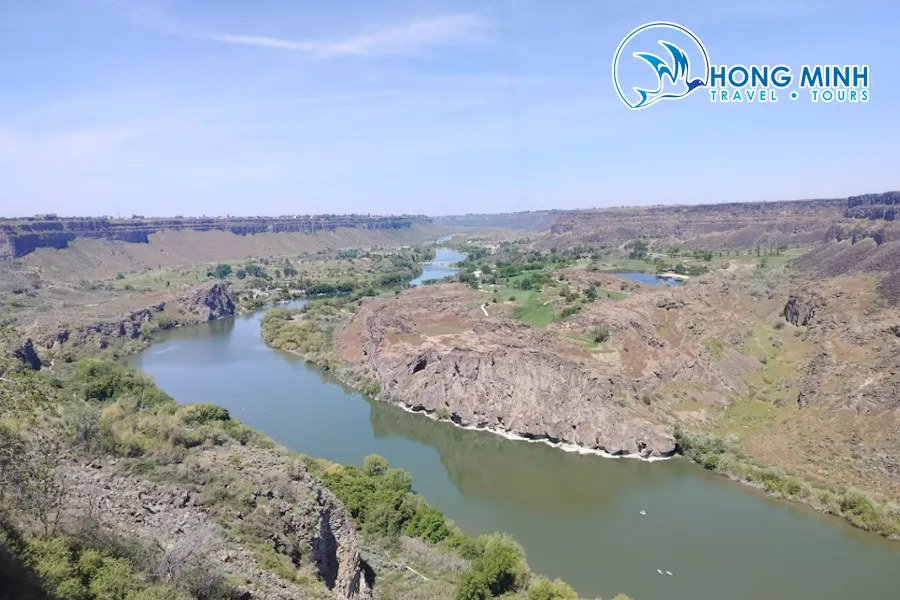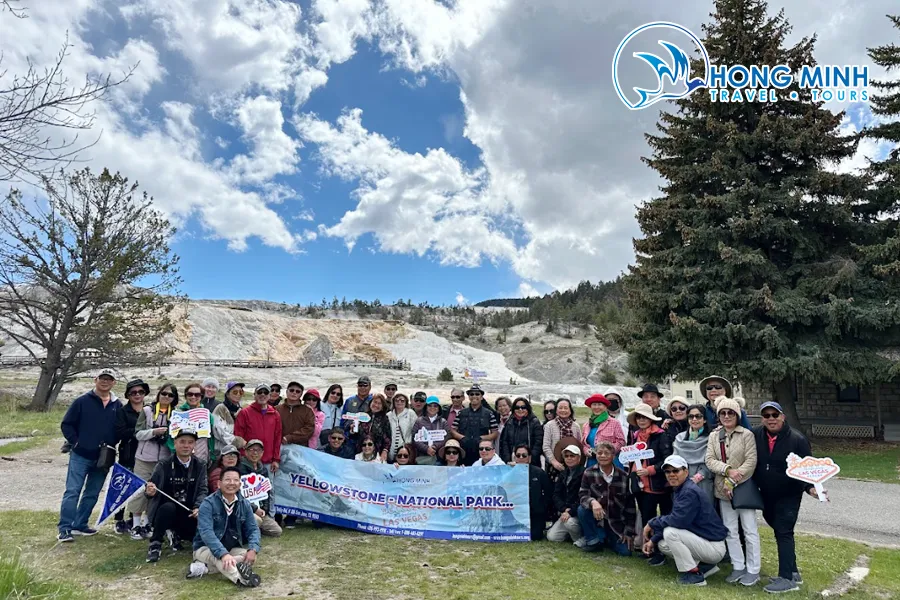Idaho, a mountainous state in the Northwestern United States, is famed not only for its vast natural landscapes, scenic rivers, and world-class ski resorts. It’s also a paradise for nature photographers, particularly for the thrilling experience of white-tail deer photography. With extensive forests, diverse ecosystems, and a rich population of white-tail deer, Idaho offers a unique chance to immerse yourself in the wild and capture mesmerizing moments of these graceful animals.
Whether you are a photographer passionate about uncovering the hidden beauty of the natural world or simply seeking a unique, nature-focused travel experience, a white-tail deer photography adventure in the Idaho forests will surely be an unforgettable memory. Join Travel the World to discover fascinating insights and tips for a successful photography trip in this pristine land.
Why Idaho is the Ideal Destination for White-Tail Deer Photography
Idaho boasts excellent natural conditions, making it a top destination for white-tail deer photography. Here are the features that make Idaho so uniquely appealing:
1. Ideal Habitat
Idaho’s vast forests cover nearly 40% of the state’s land area, creating an ideal habitat for white-tail deer. Dense forests interspersed with meadows and rivers provide abundant food sources and safe shelters for these animals. The temperate climate with its mild winters also contributes to the thriving population of white-tail deer in Idaho.
2. Abundant White-Tail Deer Population
Thanks to the favorable habitat, Idaho is home to one of the largest populations of white-tail deer in the United States. Estimates suggest that the number of white-tail deer in Idaho can reach into the hundreds of thousands, spread across forested and rural areas. This offers a fantastic opportunity to easily encounter and capture beautiful images of them in the wild.
3. Diverse Natural Landscapes
Beyond forests, Idaho contains various types of natural landscapes like high mountains, lakes, waterfalls, canyons, and grasslands. This diversity provides stunning and unique backdrops for your white-tail deer photos. Whether you want to capture deer against a backdrop of lush green forests, along serene riverbanks, or on rolling grassy hills, Idaho can meet all your creative ideas.
4. Nature Reserves and National Parks
Idaho features numerous nature reserves and national parks, which host abundant populations of white-tail deer and are stringently managed and protected. Notable examples include Yellowstone National Park (partly located in Idaho), Panhandle National Forests, and Kootenai National Wildlife Refuge. These are ideal spots for safely and successfully photographing white-tail deer in their natural environment.


Must-Visit Spots for White-Tail Deer Photography in Idaho
To make your white-tail deer photography trip in Idaho successful and complete, consider visiting these locations highly rated by professional photographers and nature lovers:
1. Yellowstone Bear World
Located near the western entrance of Yellowstone National Park, Yellowstone Bear World is a unique wildlife park where you can drive through natural habitats of various North American animals, including white-tail deer. Here, you can observe and photograph white-tail deer at close range from your vehicle, ensuring both safety and convenience.
Yellowstone Bear World is not only perfect for capturing images of white-tail deer but also offers opportunities to explore other wildlife like black bears, grizzlies, bison, moose, elk, and mountain goats. It is an ideal destination for families and wildlife enthusiasts.
2. Panhandle National Forests
The Idaho Panhandle National Forests, located in northern Idaho, include three major forests: Coeur d’Alene, Kaniksu, and St. Joe. With its vast expanse and diverse natural landscapes, the Panhandle is one of Idaho’s largest white-tail deer population areas. You can find deer in most forest areas, especially in the early morning and late afternoon when they forage.
The Panhandle National Forests are also perfect for combining white-tail deer photography with other recreational activities like hiking, camping, fishing, and kayaking.
3. Kootenai National Wildlife Refuge
Located in northern Idaho near the border with Montana and Canada, Kootenai National Wildlife Refuge spans over 1,100 hectares of forests, marshes, grasslands, and streams, providing a diverse habitat for many wildlife species, including white-tail deer.
Kootenai is an excellent location for white-tail deer photography due to the high density of deer, who are relatively accustomed to human presence. You can walk along trails in the refuge to search for and photograph deer, as well as observe other birds and wildlife.
4. Rural and Edge-of-Forest Areas
Besides nature reserves and national parks, you can also find white-tail deer in many rural and edge-of-forest areas across Idaho. Meadows, farms, and residential areas near forests are often where deer seek food and shelter. Drive slowly on rural roads, especially in the early morning or late afternoon, and you might be lucky enough to spot groups of deer grazing or moving through the woods.


Tips for Successful White-Tail Deer Photography
To capture impressive and unique photos of white-tail deer, you need to equip yourself with the necessary knowledge and skills. Here are some helpful tips for you:
1. Prepare the Right Equipment
- Camera: A DSLR or mirrorless camera with a large sensor and good low-light performance is ideal.
- Lens: A telephoto lens with a focal length of 200mm or more will allow you to take close-up shots of deer from a distance, minimizing disturbance. Flexible zoom lenses like 70-200mm or 100-400mm are versatile choices.
- Tripod: A tripod helps stabilize the camera, especially when using a telephoto lens or shooting in low light.
- Extra Memory Cards and Batteries: Ensure you have enough memory cards and batteries to capture every crucial moment.
- Clothing: Choose neutral-colored clothing to blend with nature and keep warm, especially if you are shooting in winter or early morning.
2. Learn About White-Tail Deer Behavior
White-tail deer are quite shy and easily startled. To approach them effectively, learn about their behavior, habits, and preferred habitats. White-tail deer are most active in the early morning and late afternoon, foraging in areas with abundant young plants, buds, and berries. They often travel in small groups or alone and have excellent camouflage skills in the forest.
3. Approach and Camouflage Skills
When approaching white-tail deer, move slowly, gently, and remain silent. Avoid making loud noises or sudden movements that might scare them away. Use camouflage clothing in green, brown, or gray to blend with the surroundings. Utilize terrain and vegetation to shield yourself for a discreet approach.
4. Patience and Observation
White-tail deer photography requires patience and keen observation. Spend time observing the surroundings and look for deer signs like tracks, droppings, or frequented spots. When you spot deer, patiently wait for the right moment to capture the shot. Sometimes, you might need to wait hours to get a satisfactory photo.
5. Pay Attention to Light and Timing
Lighting plays a crucial role in nature photography. Sunrise and sunset (golden hour) often provide warm and soft colors, creating magical and ethereal deer photos. Soft light in the early morning or late afternoon also helps minimize shadows and create good contrast in photos. Avoid shooting in harsh midday light with strong shadows.
6. Wildlife Photography Ethics
While photographing white-tail deer, always prioritize the safety and well-being of the animals. Maintain a safe distance, respect their space, and avoid causing stress or altering their natural behavior. Do not feed or lure deer with food, as this may harm their health and natural habits. Always adhere to regulations and guidelines set by wildlife refuges or national parks regarding wildlife protection.


Combine White-Tail Deer Photography with Other Idaho Travel Experiences
Your white-tail deer photography trip will be even more exciting and memorable if you combine it with exploring other attractive destinations in Idaho. Here are a few suggestions:
- Visit Yellowstone National Park: Discover the unique geothermal wonders such as Old Faithful geyser, Grand Prismatic Spring, and the Grand Canyon of the Yellowstone.
- Explore Snake River Canyon and Twin Falls: Witness the majestic beauty of the canyon and the famous waterfall in Southern Idaho.
- Ski at World-Class Resorts: If you visit Idaho in winter, don’t miss the chance to experience skiing at renowned resorts like Sun Valley, Schweitzer Mountain Resort, or Tamarack Resort.
- Explore the Capital City Boise: Visit museums, parks, and historic districts in the bustling and modern capital.
- Savor Local Cuisine: Try Idaho specialties such as Idaho potatoes, Snake River salmon, venison, and local pastries.
Embarking on a white-tail deer photography journey in Idaho’s forests is not just an opportunity to indulge in photography but also a chance to immerse yourself in the wild, discover Idaho’s hidden beauty, and experience the delightful offerings of this land. Plan your trip today and get ready for an emotional and unforgettable photo adventure!